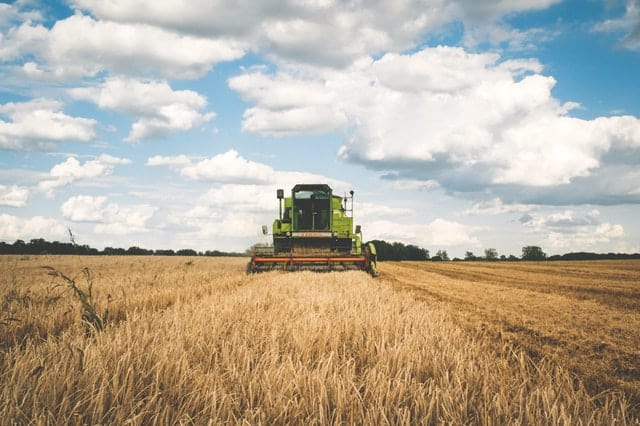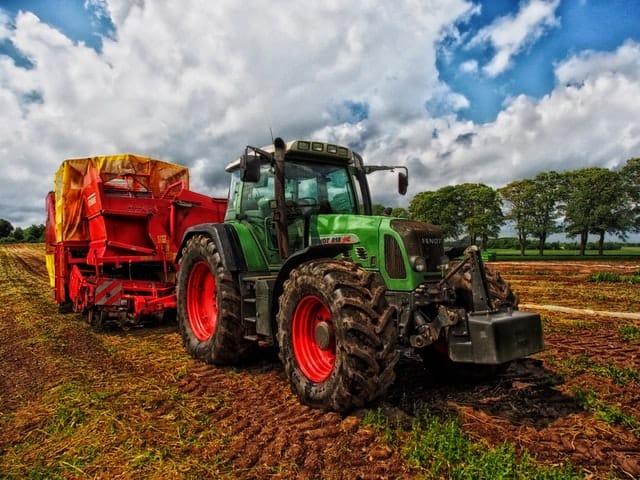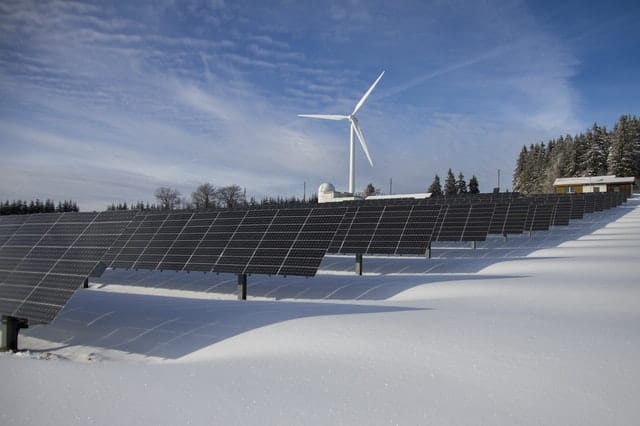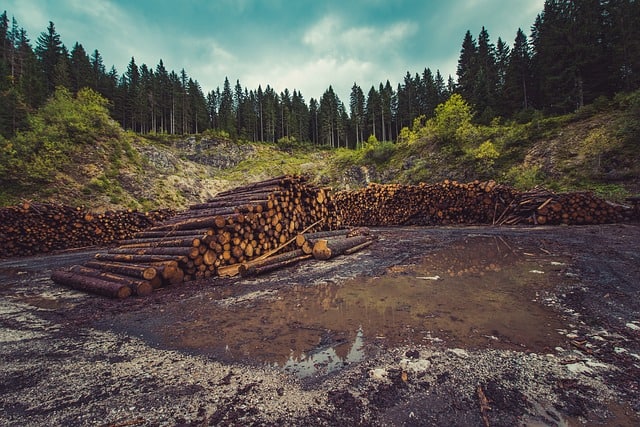Many major agricultural changes had happened over the years in order to provide enough food to the ever-rising human population. The Green revolution is one.
The Green revolution is the agricultural practices that started in Mexico in 1940. Due to its achievement in generating more agricultural products there, its technology spread globally in the fifties and sixties, thereby increasing the number of calories produced per acre of land significantly.
In this article, I will be discussing the real importance of the Green Revolution, its uses, and the problems that came with it.
What is Green Revolution?
Over the years, a lot of revolutions had occurred and they have all affected human lives, this includes the Industrial Revolution and the American Revolution. But in the mid 20th century, a revolution took place and dramatically affected the agricultural sector. This revolution was referred to as the Green Revolution.
It is also defined as the period when the productivity of agriculture worldwide multiplied substantially due to new advances in science and technology. During this period, new artificial herbicides, chemical fertilizers, and pesticides were produced.
The chemical fertilizers created help to give crops more nutrients and, increase the yield of the crops. The newly developed artificial pesticides and herbicides controlled weeds, kill or deterred insects, and avoid diseases, which later led to better productiveness.
Furthermore, there was an introduction and development of high-yield crops. High-yield crops are types of crops that are particularly designed to bring out more overall yield. A process referred to as multiple cropping was also initiated during the period of the Green Revolution and this leads to more productivity.
Multiple cropping can be referred to as when land is used to plant two or more crops all through the year; this is done so that the land is not left idle and has something growing on it continuously. Thus increasing the productivity of the land. These new advances in farming and agricultural technology have been used by farmers everywhere around the world, this change in agriculture is called the Green Revolution.
History And Development:
The change in agricultural practices in the late forties in Mexico was credited to the Green Revolution. It efficiently multiplied crop yields in the country and was finally used globally in the fifties and sixties.
Norman Borlaug, an American scientist, is credited with the birth of this revolution as he produced crop varieties that are disease-resistant and largely increased the yield of the wheat in Mexico. With this innovation, Mexico reduced its importation of wheat, and they later become the foremost exporter of wheat globally.
Borlaug started experimenting with the varieties of wheat in the early forties. Around the same time Mexico was facing severe food shortages because of the increasing population. The improved strains of wheat together with the new mechanized agriculture practiced in Mexico enable them to meet the increased food demands.
America quickly implemented these strategies started by Borlaug. Different countries mainly America and Mexico established new universities and labs to further develop new varieties of crops.
As a result of its success in Mexico, Green Revolution technologies spread globally. For example, in the forties, America was importing half of its wheat, but after making use of the Green Revolution technology, they became self-sufficient in the fifties. They became a major exporter of wheat in the sixties.
Also, India which was on the brink of mass hunger in the sixties due to its fast-rising population worked with the Mexican and American institutes and Borlaug. Their work resulted in the development of a variety of rice, IR8. This rice variety produces more yield per acre and takes fewer fertilizers.
IR8 variety enabled India to prevent famine in the country and made it one of the largest exporters of rice in the world in the late seventies.
This modified strain of rice was later introduced in the Philippines and a lot of different Asian countries, providing them with the supply of stable food and becomes a source of income for the countries.
So as to continue using this Revolution technology to provide more food for the ever-increasing human population worldwide, the Ford Foundation and the Rockefeller Foundation, and also lots of government agencies all over the world funded the increased research. With this funding, an international institution was formed by Mexico in 1963 and was referred to as The International Wheat and Maize Development Center.
All over the world, countries benefitted from Green Revolution Technologies done by Norman Borlaug and this Institution.
Plant Technologies of Green Revolution:

During the Green Revolution, the crops developed were high-yield varieties; that is, they are domesticated plants which are specially bred to respond to fertilizers and eventually produce a multiplied quantity of grain per acre planted.
The terms frequently used with these plants so as to make them successful are insensitivity to day period, photosynthate allocation, and harvest index. The harvest index is known as the weight of the plant above the ground. During the Green Revolution, plants with the largest will be selected so as to produce the maximum production possible.
After breeding these plants selectively, they all evolve and have the attributes of larger seeds. Therefore, these larger seeds produce more grain yield and their weight becomes heavier above the ground.
This larger weight above the ground eventually results in an increased photosynthate allocation. By making full use of the food portion or seed of the plant, its photosynthesis will be used more efficiently due to the fact that the production of energy during this method went directly to the seed or food portion of the plant.
Finally, any of the bred plants selected that is not sensitive to day length were been collected by researchers like Borlaug. They have a way of doubling such crop’s production since the crops were limited due to the amount of light they got.
Benefits Of Green Revolution:
Operations of agriculture in large scale:

This Revolution has introduced farming to large-scale operation. Previously in the agricultural sector, crops grown massively require a lot of human inventions in order to grow healthy. And this made farming in large scale difficult and unaffordable to some community. Presently, things are a lot easier, whereby, a lot of the crops are grown on a massive scale and even done by smaller farming communities.
Increase in crop production:
Due to the Green Revolution technology and the beginning of the use of synthetic pesticides and herbicides, chemical fertilizers, high-yield crops, and the multiple cropping processes, the agricultural sector was able to provide food in larger qualities globally. This increase in crop productivity helps to tackle and handle the ever-rising human population worldwide
Scientific Cultivation:
One of the most important effects of the Green Revolution is that the traditional agricultural practices and inputs have given way to fresh and scientific practices. As opposed to farm seeds, farmers now make use of HYV seeds (High Yield Variety). Also, the traditional fertilizers are changed to chemical fertilizers.
As a result, the lands use for High Yield Variety seeds has increased rapidly; in 1966-67, when Green Revolution got to India, about 1.66 million hectares were used but in 1998-99, about 78.4 million hectares were used.
Crops have the potential to grow anywhere:
With this revolutionary farming technique, agriculture can be done almost everywhere. Although potatoes might not be able to grow on beaches you can make use of most types of lands or terrains to grow crops. This shows that farmers do not need the most fertile lands to plant their crops since this innovative revolution has made the planting of crops possible on almost every land.
It eradicates the need to fallow lands:
With the Green Revolution, farmers can actually re-plant their crops without fallowing the lands, which help them save a lot of money since the following is very costly. Though there might be some crops in the soil which needs to be followed, the use of this Revolution would surely make it cost-efficient.
Development of Industries:
One of the most feasible advantages of Green revolution is the development of industries. A lot of industries producing chemical fertilizers, pesticides, agriculture machinery, insecticides, and so on, have arisen to meet the rising demand for these products.
Help to grow more crops:
This innovative technology also made it possible to grow more crops on the same land space with the same amount of effort. This helps to reduce the cost of production and results in cheaper prices of food in the market.
Also, the growth of more crops on the same amount of land is helpful to the environment as it meant that much less natural land and forest needed to be transformed into farmland to provide more food. This is verified from the fact gotten from 1961 to 2008; the population of humans increased by 100 percent and the production of food rose by 150 percent, but the amount of natural land and forests land changed to farm only rose by 10 percent.
Any forest and natural land not used for farmland currently is safe and can be used by plants and animals for their natural habitat.
Production in drier areas:
When we talk about the Green Revolution, we can’t just take away irrigation. Irrigation played a large and vital role in this innovative technology and this forever modified the places where various plants can be grown.
For example, before this innovative technology, agriculture is only practised in the areas where there is a considerable amount of rainfall, but now, with the use of irrigation, water can be saved and sent to drier regions, setting up more lands for agricultural production – thereby increasing the crop yields in the country.
Though this innovative Revolution had several other advantages, there have been also a few problems related to this Revolution that affected both the society and the environment.
Disadvantages of Green Revolution:
Before we go into the Disadvantages of the Green Revolution, the Author Walt Davis (Also a Former in Texas) explains the Green revolution delusion in his book in his book at Amazon.
This is a very important book that must be read. It shows that real ranches and real farms produce real food that sustains the ranchers and farmers as well as the public that is eating the food.
This book points out what a disaster to the food system, Industrial Agriculture has become. It is written plainly in a genre that is easily understandable.
Cause weeds and pests to dangers:
This innovative method of farming is known to bring about the emergence of poisonous pests and weeds which can be hard to control. Apart from this, there is a problem of cross-pollination between traditional plants and genetically changed organisms that might cause invasive species.
Health hazards:
The health risks in this modern technology cannot be overlooked. Increase in the use of machines that come with the innovation of farm technology in Green Revolution regions come with the risk of injury due to accidents.
Also, the approach of the government towards the issues of rehabilitation and treatment of sufferers of accidents when using farm machines is that of total negligence. A little amount of money is given to victims.
Difficulties with varied types of soil by location:
This modern technology does not bother about the kind of soil for farming, it only thinks about the area and does whatever needed for crop cultivation, Therefore, it does not replenish or retain the soil fertility.
It makes use of mono-culturing:
Mono-culturing is considered one of the biggest problems of the Green Revolution. This practice needs a lot of lands, which are not always available, large volumes of water and large quantities of fertilizers, thereby resulting in difficulties for farmers.
Labour Absorption:
There has been a general belief that the use of this modern technology decreases absorption of labour in agriculture. The uneven growth in the region was the cause of low labour absorption in agriculture. The output growth was also not quick to generate enough employment opportunities.
Generally, the unexpected rise in the demand for labour in these regions encouraged labour-saving practices and mechanization.
Despite these issues which are worth noting, the Green Revolution has forever modified the way agriculture is practised globally, helping the people of different countries in need of the increase in food production. Based on this article you just finished reading, do you agree that this Green Revolution technology is beneficial to this our present-day world or not?
Now you must have learnt the real importance of the green revolution and along with many other details.
Also, here are a few hand-picked articles for you to read next:
- What Are The Effects Of Volcanoes On The Environment?
- What Does Nature Give Us?
- How Are Mountains Useful To Us?
- What Are The Uses Of Rivers?
- Why Is Renewable Energy Important For The Future?
- The Real Importance of Trees In Our Life
- What Is The Actual Importance Of Recycling ?
- How To Actually Control Noise Pollution?




